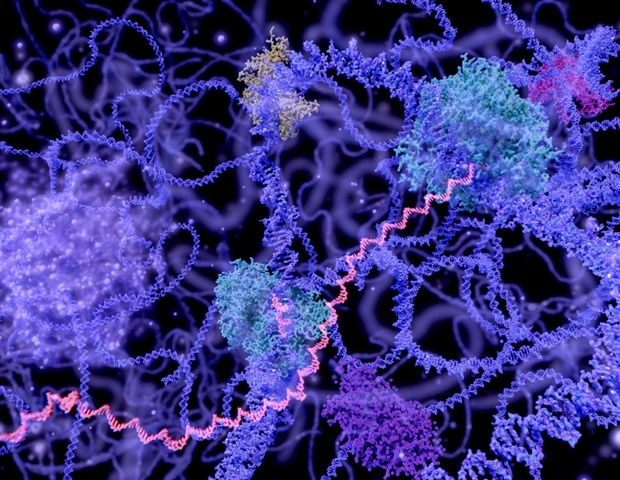A team of scientists from France has recently described the epidemiological and clinical consequences of a bat sarbecovirus infection in humanized mice. The study, which is currently available on the Research Square* preprint server, provides useful information about the possible origin of severe acute respiratory syndrome coronavirus 2 (SARS-CoV-2).
Background
SARS-CoV-2, the causative pathogen of coronavirus disease 2019 (COVID-19) pandemic, is an RNA virus belonging to the human betacoronavirus family. The virus is believed to have a zoonotic origin, given the presence of many SARS-CoV-2-like viruses in animals.
BANAL-236 is a bat sarbecovirus that shows high sequence similarity with SARS-CoV-2. The virus can efficiently infect human cells via its interaction with angiotensin-converting enzyme 2 (ACE2). However, it is less pathogenic and transmissible in humans because of the absence of a furin cleavage site, which is believed to play a vital role in SARS-CoV-2 pathogenesis.
In the current study, the scientists have investigated whether BANAL-236 like viruses silently circulate in human populations even before the emergence of SARS-CoV-2. Moreover, they have investigated whether the viruses have acquired adaptive mutations during silent circulation to become more transmissible and pathogenic strains.
Bat sarbecovirus replication in humanized mice
Bat sarbecovirus BANAL-236 was found to infect transgenic mice expressing human ACE2. However, BANAL-236 infection in mice caused lower pathogenicity than SARS-CoV-2 infection in weight loss and lung viral load. Moreover, BANAL-236 infection-induced antibodies showed higher neutralizing efficacy against the homologous strain than SARS-CoV-2 infection-induced antibodies.
Importantly, mice primed BANAL-236 developed full protection against lethality and weight loss that might be otherwise induced by the more pathogenic D614G mutation-containing SARS-CoV-2.
Furthermore, no changes in the dynamics of BANAL-236 infection in the lungs or overall viral pathogenicity were observed after six serial passaging of the virus in human ACE2-containing transgenic mice.
Bat sarbecovirus replication in non-human primates
Non-human primates infected with either BANAL-236 virus or SARS-CoV-2 showed completely different replication dynamics. While SARS-CoV-2 infection was predominantly associated with lung tropism and respiratory shedding, BANAL-236 infection largely showed intestinal tropism and fecal shedding.
In contrast to SARS-CoV-2 infection, BANAL-236 infection caused only mild pulmonary lesions in non-human primates. A transient lymphopenia was observed following BANAL-236 infection. The antibodies induced by BANAL-236 infection showed significant cross-reactivity against SARS-CoV-2.
Acquisition of mutations
Considering the low pathogenicity of BANAL-236 virus, there remains a possibility of its silent circulation in human populations. This condition was mimicked in the study by serially passaging the virus in human cells and humanized mice.
The genome sequencing analysis of various viral isolates identified a set of mutations not present in the original BANAL-236 strain. However, no detectable mutation within and around the furin cleavage site was observed.
Among identified mutations, the most prominent one was a missense mutation (V391I) in the spike receptor binding domain (RBD) that was positively selected during the passages. This mutation was associated with other identified mutations that appeared during viral passages in human cells and non-human primates. These mutations were located in different genomic portions, including non-structural protein (NSP) 10, NSP 15, open reading frame (ORF) 3a, NSP 14, and spike N-terminal domain (NTD).
Some mutations appeared in the BANAL-236 genome during its passages in humanized mice. These mutations were located in the spike protein, RNA-dependent RNA polymerase, ORF6, and ORF3a.
Considering the distinct mutational landscape of BANAL-236 virus in human cells and humanized mice, the scientists suggest that these mutations may not influence the infection pathways shared by human cells and humanized mice.
Furthermore, the functional aspects of spike mutations were determined using molecular dynamics simulations. The findings revealed that the RBD V391I mutation is not associated with any alteration in RBD stability or affinity for human ACE2.
The P627L mutation that appeared in the spike S1 subunit caused minor conformational changes in the spike protein without affecting its overall structure and function. Similarly, the S52R mutation appeared in the NTD did not influence the overall dynamics of spike protein.
Prevalence of sarbecoviruses in human populations
The sarbecovirus seropositivity survey conducted in the study could not detect any antibodies targeting bat sarbecoviruses in human populations that are highly exposed to bats. This indicates that bat sarbecovirus infection is a rare event in humans.
Study significance
The study rules out the possibility of acquiring a furin cleavage site in bat sarbecoviruses during their silent circulation in human populations. As suggested by the scientists, specific identification of a furin cleavage site in animal sarbecoviruses is crucial to determine the origin of the COVID-19 pandemic.
*Important notice
Research Square publishes preliminary scientific reports that are not peer-reviewed and, therefore, should not be regarded as conclusive, guide clinical practice/health-related behavior, or treated as established information.




